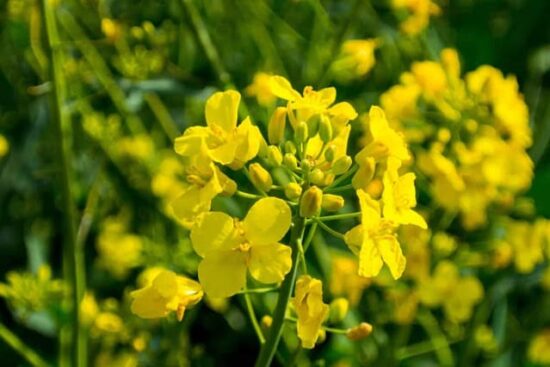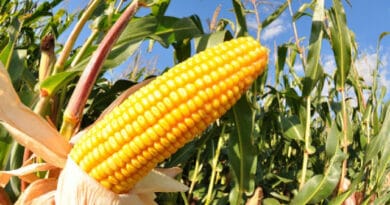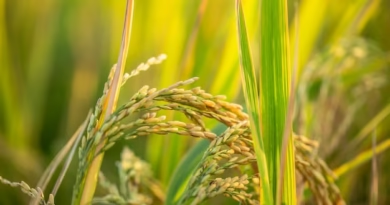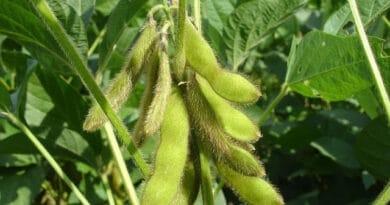Cultivation of Rape Seed Mustard (Brassica spp.)
Rapeseed and mustard (Brassica spp.) are major rabi season oilseed crops. They are next in importance to groundnut, both in area and production, and they meet the fat requirement of about 50% of the population in the states of Uttar Pradesh, Punjab, Rajasthan, Madhya Pradesh, Bihar, Odisha, West Bengal, and Assam.
Uses of Rape Seed Mustard;
- It is used in the preparation of hair oils and medicines.
- It is used in soap making and mixtures with mineral oils for lubrication.
- Rape seed oil is used in the manufacture of greases.
- The oil cake is used as a cattle feed and manure.
- Green stems and leaves are a good source of green fodder for cattle.
- The leaves of young plants are used as green vegetables as they supply enough sulfur and minerals in the diet.
- In the tanning industry, mustard oil is used for softening leather.
Classification of Rapeseed and Mustard Grown in India;
| Indian Group | International Commercial Name | Species | Common Name | Local Name |
| Sarson | Indian Colza, Colza rape | Brassica compestris Var. Yellow Sarson | Turnip Type | Yellow Sarson |
| Indian Colza, Colza rape | Brassica compestris Var Yellow Sarson | Turnip Type | Brown Sarson | |
| Toria | Rape | Brassica compestris Var Yellow Toria | Indian Rape | Yellow Toria |
| Brassica compestris Var Black Toria | Indian Rape | Black Toria / Lahi | ||
| Rai | Mustard | Brassica juncea | Indian Mutard | Rai / Raya/Laha |
| Brassica Juncea Var Rugosa | Rugosa | Pahari Rai | ||
| Brassica Nigra | Black Mustard | Banarsi Rai |
Climatic Requirements for Rape seed and mustard Cultivation
Rapeseed and mustard are crops of tropical and temperate zones and require somewhat cool and dry weather for satisfactory growth. Crops require a fair supply of soil moisture during the growing period and clear weather at maturity. Cool temperatures, clear dry weather, and plentiful bright sunshine accompanied by adequate soil moisture increase the oil yield.
Rapeseed and mustard are long days in a periodic response. These crops are not drought tolerant. They require annual precipitation of 35-45 centimeters. The crop also does not tolerate waterlogging.
Soil Requirements for Rape seed and mustard Cultivation
Rapeseed and mustard can grow under a wide range of soil conditions, varying from sandy loam to clay loam soils, but they thrive best on light loam soils. They neither tolerate waterlogging conditions
Rotations and Mixed Cropping
Rape and mustard are grown in rotation with other crops like maize, cotton, bajra, pulses, etc. Rape and mustard should never be grown in fields that were sown with the same crops in the previous two years. Such a minimum period of rotation is required to break the insect and disease cycle.
Toria being a catch crop, maturing in 90-100 days can easily be adjusted in the following crop rotations:
(1) Maize—toria-wheat
Brown sarson and mustard (rai) are cultivated as pure crops in rainfed areas. During the rainy season, no other crop should be sown, rather moisture should be conserved as much as possible by ploughing. In regions where irrigation facilities are available, the following crop rotations may be followed:
(1) Moong-brown or yellow sarson or rai
wheat, barley, and gram. The practice of taking mustard (rai) as an intermediate crop with autumn-planted sugarcane in which no additional land is required also offers scope to augment mustard production without adversely affecting the yield of companion crops of sugarcane.
Field Preparation for Rape Deed and Mustard Cultivation;
A clean and well-pulverized seedbed of good tilth is needed for better germination. The land should be prepared first by ploughing deep with a soil turning plough, followed by two cross harrowings.
Each ploughing should be followed by planking, for pulverized and leveled soil. Care should be taken that weeds and stubble are well removed from the field and the soil contains adequate moisture to ensure good germination.
Seed and Sowing;
- Planting time is the single most important variable affecting the seed yield of rapeseed and mustard.
- Since the rate of development of oil percentage in the seed is greatly influenced by the variation in atmospheric temperature, humidity, and other biotic factors, sowing either too early or too late has been reported to be harmful.
- Delay in planting will cause a reduction in yield, due to the depressing effect on the plant growth, flowering duration, seed formation, and seed size.
- Therefore, for getting good yields of rape and mustard timely sowing is a must.
- Toria should be sown from the middle to the last week of September. If the sowing of toria is delayed, there is great danger of an attack of aphids on this crop.
- Sowing of sarson and rai must be completed in the first fortnight of October
Seed Rate And Spacing; - Spacing has no absolute value in the cultivation of rape and mustard as it fluctuates a great deal with the growth habit of variety, date of sowing, manuring, and irrigation practices.
- Generally, toria is planted in rows 30 centimeters apart while sarson and rai are sown in rows 45 centimeters apart. Thinning is done three weeks after sowing to maintain a plant-plant at a distance of 10 to 15 centimeters.
- In the case of mixed cropping, they are generally sown in rows 1.8 to 2.4 meters apart in the main crop.
- Five to six kg of seed should be sown in rows at a depth of 2.5-3.0 centimeters in case of a pure crop.
- When sown mixed with another crop, 1.5 to 2 kg seed per hectare is sufficient. Sowing could be done either behind the local plough or through a seed drill. Before sowing seed, it should be treated with Thiram or Captan at the rate of 2.5 g per kg of seed.
Manures and Fertilisers;
Rapeseed and mustard respond well to organic and inorganic manure. If available, apply 15-20 tonnes of farmyard per hectare manure or compost at the time of field preparation. These crops show a good response to chemical fertilizers. - For a good harvest, apply 60-90 kg of nitrogen, 60 kg of Phosphorus, and 40 kg of potassium per hectare. The quantity of phosphorus and potash should be based on soil test recommendations.
- Split application of nitrogen has been found very useful for rape and mustard crops. Under irrigated conditions, half of the nitrogen and the full dose of phosphorus and potash should be applied as a basal dose at the time of sowing by placement method.The remaining half of the nitrogen should be applied at the time of the first irrigation.
- If the crop is rainfed, use only half of the recommended dose of nutrients. Rapeseed and mustard have a higher requirement for sulfur, therefore, nitrogen should preferably be applied through ammonium sulfate and phosphorus from a single superphosphate.
- In rai, foliar application of nitrogen is useful under barani conditions.
Water Management in Rape Seed and Mustard ;
Rapeseed and mustard are usually raised as rainfed on the conserved moisture from monsoon rains. Good yields can be achieved if the fields are bunded and leveled before the monsoon and plough two to three times during the monsoon season bulky organic manures are applied in the soil to improve the moisture storage capacity of soil and evaporation losses of moisture are minimized by the use of inter cultivation or mulching on the soil surface. Rapeseed and mustard respond to irrigation as well. The application of even a small quantity of water has shown very encouraging results in these crops. Two irrigations at pre-bloom and pod filling stages are beneficial.
Weed Control in Rape Seed and Mustard
- Weeds in rape and mustard crops cause approximately a 20-30 percent reduction in yield.
- The most common weeds which grow in rape and mustard crop are Chenopodium album (bathua), Lathyrus spp. (chatri matri) , Melilotus indica (senji), Cirsium arvense (kateli), Fumaria parviflora and cyprus rotendous (Motha).
- Care should be taken to remove all the weeds in the early stages of crop growth to avoid competition for the reserve of moisture.
- One intercultural operation with a hand hoe is very beneficial. This, besides creating a soil mulch and thus reducing moisture losses through evaporation, helps in better growth and development of crop plants.
- The thinning operation should be accompanied by intercultural to provide the plants with proper space within the rows.
- Chemicals could also be used to control the weeds effectively. Apply Nitrofen at the rate of 1-1.5 kg a.i. per hectare or Isoprofuron 1 kg ald per hectare in 800-1000 liters of water as a pre-emergence spray.
Diseases of the Rapeseed Mustard Crop;
Disease | Symptom | Control |
Alternaria Blight | Caused by a fungus, Alternaria brassicae. The path perpetuates through seed and affected plant portion (refuse) in the soil The disease is characterized by the appearance of concentric black spor on leaves, stems, and pods. In years of a severe outbreak, pods turn black color and may also rot. Such pods contain shriveled, undersized seeds | (1) Usef healthy seeds for sowing should be preferred. (2) Spray Difolatan or Dithane M-45 at the rate of 2 kg in 1000 lit water /Ha at 10 day an interval as soon as symptoms start appearing on the plant (3) Collect and burn the affected plant portions after the harvest of the crop |
Downy Mildew | Caused by a fungus, Peronospora brassicae. In the disease-affected plants, yellow, irregular spots appear on the upper surface of the leaves and white growth is visible on the under surface opposite to spots. If the attack is severe, the inflorescence is also affected. The affected inflorescence is malformed, twisted, and covered with a white powder. No pods are produced on such inflorescence. | (1) Use healthy seeds for sowing. (2) Spray the crop with 0.2% Zineb or 0.1% Karathane as soon as the symptoms are noticed and repeat the spray two to three times at 10 days intervals. |
White Blister | Caused by the fungus, Albugo candida. This disease can be a serious menace if it occurs along with downy mildew. The disease is characterized by white raised blisters on leaves, stem, petiole, and floral marts. These blisters burst and liberate a white powder. There is much deformity of the floral parts. Flowers get malformed and become sterile | (1) Use healthy seeds for sowing. (2) Spray the crop with 0.2% Zineb or Difolatan as soon as the symptoms are noticed and repeat the spray if needed at the 10-day interval.(3) Keep the field free from weeds. |
Insect and Pest of the Rapeseed Mustard Crop;
Insect – Pest | Symptom | Control |
Mustard Saw Fly | The adult fly is the most important seedling pest of rapeseed and mustard. the adult fly is orange-colored with a blackhead. Since the female has like ovipositor, it is called a sawfly. The larvae of this pest feed leaves of rapeseed and mustard making holes. Sometimes they eat entire lamina of the leaf leaving behind the midribs. It is a sporadic pest and in certain years it becomes so serious that plants are defoliated completely. It appears in October and its peak season of activity is in November. The population disappears suddenly on the onset of winter | For control of grown-up larvae, apply 5% malathion dust @ 37.5 kg/ha. |
Mustard Aphid | It is a very serious post and is the main limiting factor in the production of rapeseed and mustard. Both nymph and adult suck the sap of the tender leaves, twigs, stem, inflorescence, and pods by means of piercing and sucking type of mouthparts. The aphids are green small insects about 2 millimeters in size. The affected leaves usually curl and in case of severe infestation the plant wilt and dry. Due to the attack on the inflorescence, the pod formation is adversely affected. The aphids also secrete ‘honeydew! on which black mould develops. This mould adversely affects the normal physiological activities of the plants. | As the cold and cloudy weather favors the pest multiplication. sowing the crop earlier than the normal sowing time escapes the pest attack. Spraying of the crop with Dimecron 1`00@ 250 ml per hectare or Rogor 30 EC at the rate of one liter per hectare in 1000 liters of water is quite effective in controlling these insects |
Painted Bug of Mustard | The full-grown bug is a small insect about 6 mm in length, black in color with conspicuous red and orange spots on the body. Both and adults suck the sap of leaves and tender stems resulting in poo and the pale yellow color of the leaves. In a later stage, the insect sucks the sap of the pods with the result of both the quantity and quality of seed is adversely affected | (1) The nymphs can be very effectively controlled by applying 5% malathion dust @ 37.5 kg/ha. (2) The use of systemic insecticides like Dimecron, and Rogor, has been found effective to control both nymph adults. |
Cabbage Butter Fly | The full-grown larvae of this pest are 3 to 4 cm in length with bright yellowish-green color and small hairs on the dorsal side. The larvae of this pest feed voraciously on the leaves, branches, and pods of the crop The plants are defoliated with the result the small plants die while the grown-up plants suffer in growth and yield. | (1) The caterpillars in early-stage should be controlled by handpicking and killing. (2) Spraying with Malathion 50 EC at the rate of 1 liter per hectare controls the pest. In case there is an attack of other pests also, the use of Nuvacron 40 EC at the rate of 1 liter per hectare in 1000 liters of water has been found very effective, |
Bihar Hairy Caterpillar | This is a polyphagous pest and causes severe damage to rape and mustard crop when it appears in epidemic form. The newly hatched caterpillars remain in clusters on the lower surface of the leaves and feed on the epidermis. The grown-up larvae disperse and feed in isolation. They eat away entire leaf tissues leaving only the midribs. If the attack occurs at the green pod stage, the entire green tissues of the pods are eaten up resulting in pre-mature shriveling and drying of the seeds causing heavy loss to the crop. | (1) Clipping and destruction of eggs should be followed, (2) Early instars can be controlled by applying 5% malathion dust @ 37.5 kg/ha. (3) Grownup caterpillars can be controlled by the spray of Malathion 50 EC, Thiodan 35 EC, or Fenitrothion 50 EC at the rate of 1to 1.25 liters in 1000 liters of water per hectare |
As soon as the pods turn yellowish-brown, harvest the crop. The crop table to shattering, hence it should be harvested just before the pods
in order to avoid losses. Sarson is less liable to shattering as compared to toria and mustard. The crop is harvested with the help of sickles. The harvested crop should be stacked on the threshing floor for five to six days before threshing. Threshing is very easy with the help of sticks. The pods easily shatter and give away seeds. Threshing could be done with bullocks or a tractor. The threshed grain is separated from the husk with the help of a slow-moving natural air current. The cleaned seed must be dried in the sun for four to five days or till the moisture content comes down to 8 percent.
Yield of Rapeseed Mustard;
With the use of improved varieties, agronomical, and plant protection techniques, the farmers may expect to harvest per hectare 14-20 quintals of the seed of rapeseed and 20-25 quintals of mustard.



